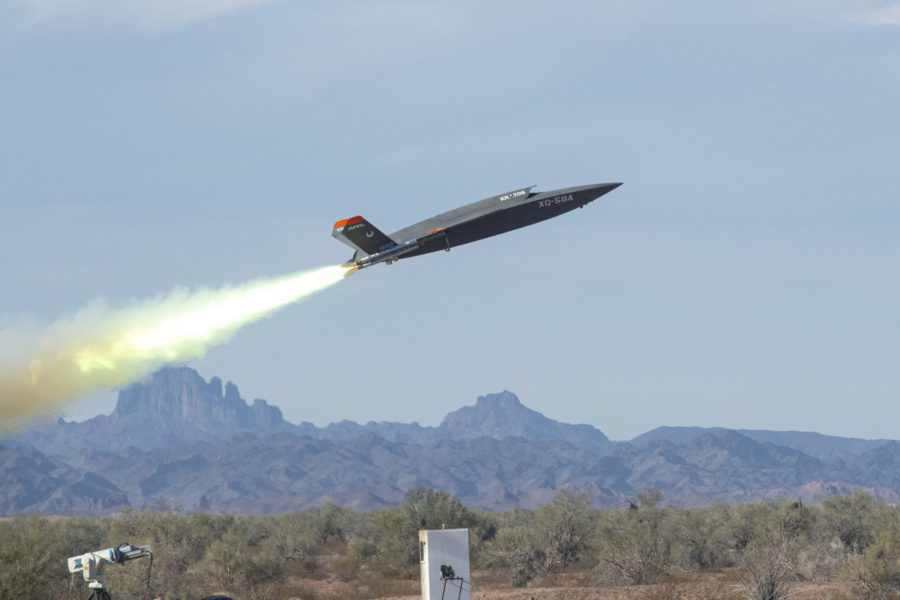A new aircraft will soon be in the skies for testing above Eglin Air Force Base, Fla.
The Air Force has transferred two XQ-58 Valkyrie drones to the 40th Flight Test Squadron at Eglin, the 96th Test Wing announced Nov. 9—a key development as the service moves quickly to develop and field unmanned, autonomous aircraft that can pair with manned systems.
The 40th FTS will use the XQ-58s, developed by contractor Kratos, to test autonomous aircraft operations, airspace, and safety processes. An Autonomous Aircraft Experimentation team within the 40th FTS will lead the testing, partnering with the Air Force Research Laboratory’s Strategic Development Planning and Experimentation office.
Some of that testing will include the software developed as part of the Air Force’s “Skyborg” program, which was aimed at developing an artificial intelligence-enabled system to control unmanned aircraft. But it will also include autonomy software “provided by third-party government and industry partners,” according to the 96th Test Wing’s release.
It’s all likely to play a key role in developing “Collaborative Combat Aircraft”—the name the Air Force has given to its plans for uncrewed aircraft that will fly in loose formations with crewed fighters, directed by the live pilots but carrying out tasks autonomously.
Air Force Secretary Frank Kendall has made the CCA program a priority as one of his “Operational Imperatives” for the service to focus on, with hopes of producing aircraft in the very near future.
In order to develop the necessary requirements and prove out capabilities, however, the Air Force needs test data.
“The data generated during previous tests, along with feedback provided from our user community, show that in order to rapidly develop and mature tactical autonomy on an appropriate timeline, investment in, and utilization of, appropriate military range resources is required,” Matthew Niemiec, AFRL autonomous aircraft experimentation portfolio lead, said in a statement.
And so the XQ-58 has arrived at Eglin, with plans to start flying by December. Infrastructure and logistics for the drone still have to be built, the release noted, but given the urgency associated with CCA and autonomous software, the 40th FTS’s Autonomous Aircraft Experimentation team will have to move quickly.
Already, Maj. John Nygard, the team lead, has said the goal is to start experimenting with “crewed-uncrewed teaming display solutions” by the fall of 2023.
The XQ-58 has been a part of the Skyborg program for a few years now and recently was part of tests with autonomous software that Kratos announced in July. First developed as part of AFRL’s Low Cost Attritable Aircraft Technology portfolio, the Valkyrie has also flown tests showing capabilities such as releasing another drone in flight and carrying technology allowing an F-35 and F-22 to share data in-flight.
Most recently, Kratos announced Nov. 3 that the aircraft, flying at the Army’s Yuma Proving Ground, had completed a successful flight test showing it can fly longer, higher, farther, and at a heavier weight.
And while the 96th Test Wing’s release emphasized the Valkyrie’s role in testing autonomous aircraft systems, Kratos executives have expressed hope that the XQ-58 can be tested and used in other ways as well.
“There are other activities going on with the Valkyrie system right now,” Jeffrey Herro, a senior vice president in Kratos’ unmanned systems division, said in an interview with Air & Space Forces Magazine. “We’re very happy with the performance of it. The performance on these last flights … was very good. We’re really happy with that. And we’re continuing to evolve other capabilities for other platforms. … Because at the end of the day, we’re building an airplane. And we’ve presented this airplane as a multi-mission-capable system.”

